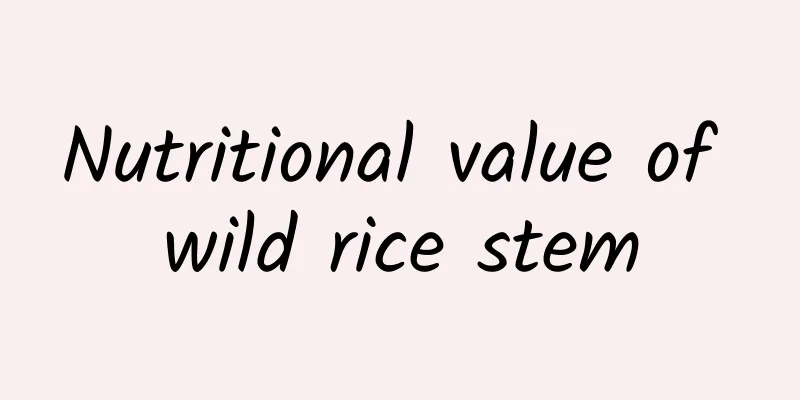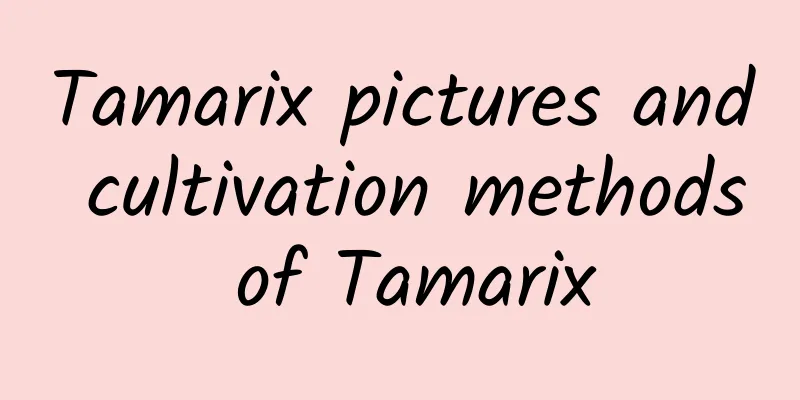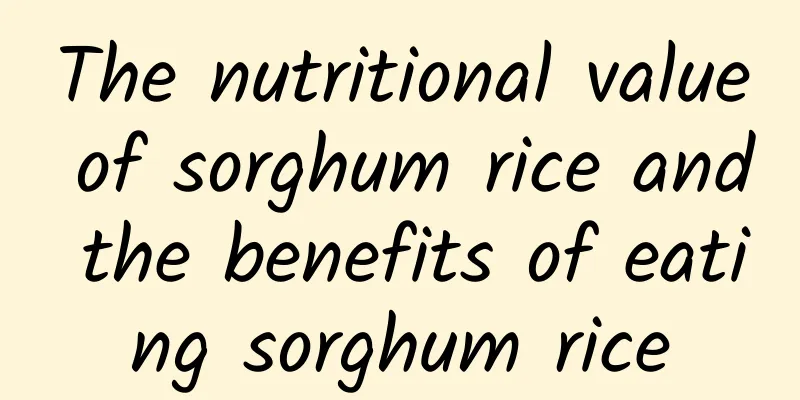Nutritional value of wild rice stem

|
Wild rice stem is a very common vegetable in the vegetable market. We usually stir-fry it with meat. Let's learn about its nutrition. Nutritional value of wild rice stem Nutritional content of wild rice stemAlso known as wild rice melon, wild rice shoots, wild rice hands, and carved beard, it belongs to the Gramineae family and is a perennial aquatic herb. The seeds of wild rice are called wild rice, which is one of the six ancient grains. At present, the edible part of wild rice is the fleshy stem at its base. Wild rice is a unique aquatic vegetable in my country, and is known as one of the three famous dishes in the south of the Yangtze River along with water shield and sea bass. Because of its fresh texture and sweet taste, it is regarded as a top vegetable. Wild rice is rich in nutrients, containing 4% carbohydrates, 6.59% organic nitrogen, 81.9% water, 2.3% fat, 1.5% protein, 1.28% fiber, and 1.17% ash powder. Wild rice contains 17 kinds of amino acids such as lysine, among which threonine, methionine, phenylalanine, lysine, etc. are essential amino acids for the human body. The organic nitrogen in wild rice exists in the form of amino acids, which tastes delicious, has high nutritional value, and is easily absorbed by the human body. Water chestnuts also have certain medicinal value. Traditional Chinese medicine believes that water chestnuts are cold in nature and sweet in taste. They have the effects of clearing dampness and heat, detoxifying and promoting lactation. They are a good choice for people with high blood pressure, high blood lipids and for weight loss. The Dietary Materia Medica records that water chestnuts "benefit the evil spirits of the five internal organs, red face due to distiller's lees, white scabies, ulcers, and red eyes. Heat and toxic wind, sudden heart pain, can be cooked with salt and vinegar." The Compendium of Materia Medica believes that water chestnuts have the function of relieving irritability and heat and regulating the intestines.Wild rice dietary taboosBecause water chestnuts contain more oxalic acid, their calcium is not easily absorbed by the human body. People with heart disease, urinary stones, or a lot of oxalate crystals in the urine should not eat too much of them. It should not be eaten with tofu, otherwise it is easy to form stones.How to choose wild rice stemWhen choosing wild rice stems, the best ones are those that are plump, fresh and tender, have white flesh and a sweet taste. Good quality茭白 has uniform shape, white color, crisp and tender texture, and no gray. Otherwise, the quality is poor. |
<<: What is fennel? What are the effects and functions of fennel?
>>: Introduction to Lentils Lentil cooking knowledge
Recommend
Effects of Chinese yam
Huaishan is a food with high nutritional value. N...
The efficacy and function of rose
Rose is a kind of flower plant that everyone has ...
The dangers of drinking carbonated drinks frequently
In summer, some carbonated drinks have become the...
How to make chili oil
As a condiment, chili oil is loved by everyone. T...
How to deal with a stuffy nose Tips for a stuffy nose
A stuffy nose is also known as a stuffy nose. It ...
Can I add mushrooms to chestnut stewed chicken?
Chicken stewed with chestnuts is one of the most ...
Steps to make spicy eggplant
Today I will tell you a few ways to cook eggplant...
What is Hollister like? Hollister Reviews and Website Information
What is Hollister? Hollister Co. (abbreviated as H...
How is Alaves Football Club? Alaves Football Club Reviews and Website Information
What is the website of Alaves Football Club? Depor...
Can lychee and mangosteen be eaten together? Can lychee and mangosteen be eaten together?
Lychee is a fruit that is available from May to S...
How to make Honghu steamed fish
Honghu is a city in Hubei Province, which is a fa...
What is Dilbert like? Dilbert review and website information
What is Dilbert? Dilbert is a personal website of ...
How to make aloe vera gel How to make aloe vera gel
Aloe vera gel can hydrate the skin and beautify t...
Do lotus seeds and lotus seed cores have the same effect?
Lotus seeds are the seeds of the lotus plant, whi...
What is Getafe like? Getafe reviews and website information
What is Getafe? Getafe Club de Fútbol is a profess...









